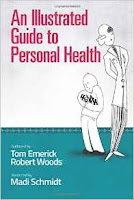You can't stay ahead of these errors.

Remember the story about my MD friend's elderly mother , the one who was suffering from falls because she was over-medicated for blood pressure issues? Once the doses were reduced, she did fine: "She has more stamina than ever before. She is happy." Well, here's the next chapter: So Mom is back in her original assisted living place, walking with a walker, to everyone's surprise. However, the medical errors are following her. When she was being discharged, the rehab center sat me down and gave me a discharge summary and medication list, saying they had been faxed to the original nursing home. We went over and discussed every medication. 9 pm the night she went back, my phone rings; it's the nursing office of the original place saying they have her on Tramadol but the pharmacy says there is an allergy. I said, "What?" You see, Tramadol was not on her medication list. They said, "It wasn't on the list YOU gave us but it IS on the lis...











